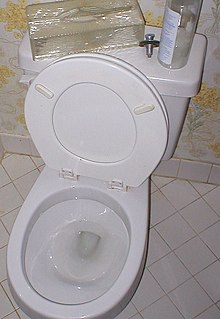Australians need bigger toilets
Tuesday, March 7, 2006

Standards Australia, the non-government standards setting organisation in Australia has indicated that it is reviewing the weight limit for toilet seats as they need to accommodate the "increasing size of humans".
Obesity levels have been rising for years in Australia. Australian Bureau of Statistics data shows that the percentage of Australian men who are overweight or obsese rose 10 percent in the last ten years to 62 percent. The number of females who are considered overweight or obese rose 8 percent to 45 percent. Standards Australia is considering recommending strengthening loos for larger users. They say experts will examine the seats "from the perspective that people are getting bigger."
Standards Australia says as the community's weight increases, and many more Australians are in the heavier categories, toilet regulations have to be updated. General manager of standards development Colin Blair says toilets are currently required to meet a rigidity test of 45 kilograms (99 lbs) - which accommodates most people's weight in a seated position.
He says a committee including manufacturers and consumers will assess whether that is still adequate. "They will re-look at what the statistics are on weights of people, they will re-look at that rigidity load and then that document will go to public comment, so obviously the experts out there will have an opportunity to re-look and see whether that load is appropriate," said Colin Blair.
Standards Australia review committee member Steve Cummings, head of research and development for toilet manufacturer Caroma Dorf, said toilet seats currently only had to withstand a 45kg load. "We are bringing it in to line with the weight of a heavy Australian," he said.
The draft seat standard is due to be issued for public comment mid-this year and set for release by the end of 2006.
Health economist Paul Gross recently said the price of obesity for the community was about $11 billion a year.
Sources
- "Hefty Aussies flush out dunny review" — ABC Online, March 7, 2006
- John Rolfe. "Stronger toilet seats are a weight off our behinds" — The Courier Mail, March 7, 2006
- "Does my bum look big on this?" — News.com - News Limited, March 7, 2006
- "Sturdier toilets on the way for heavier Australians" — Canadian Press, March 6, 2006
- "Growing Aussies Need Sturdier Toilets" — Forbes, March 6, 2006